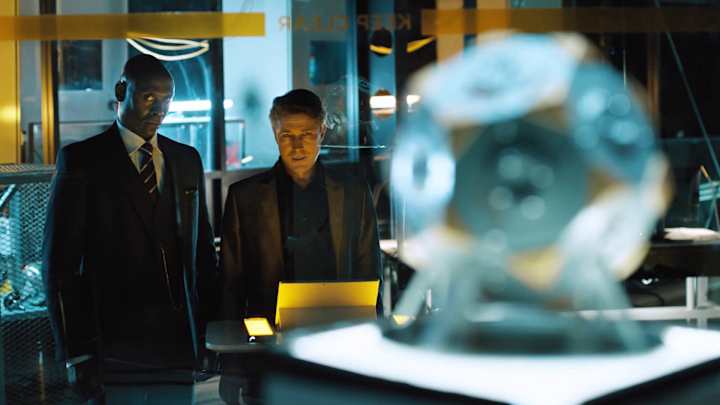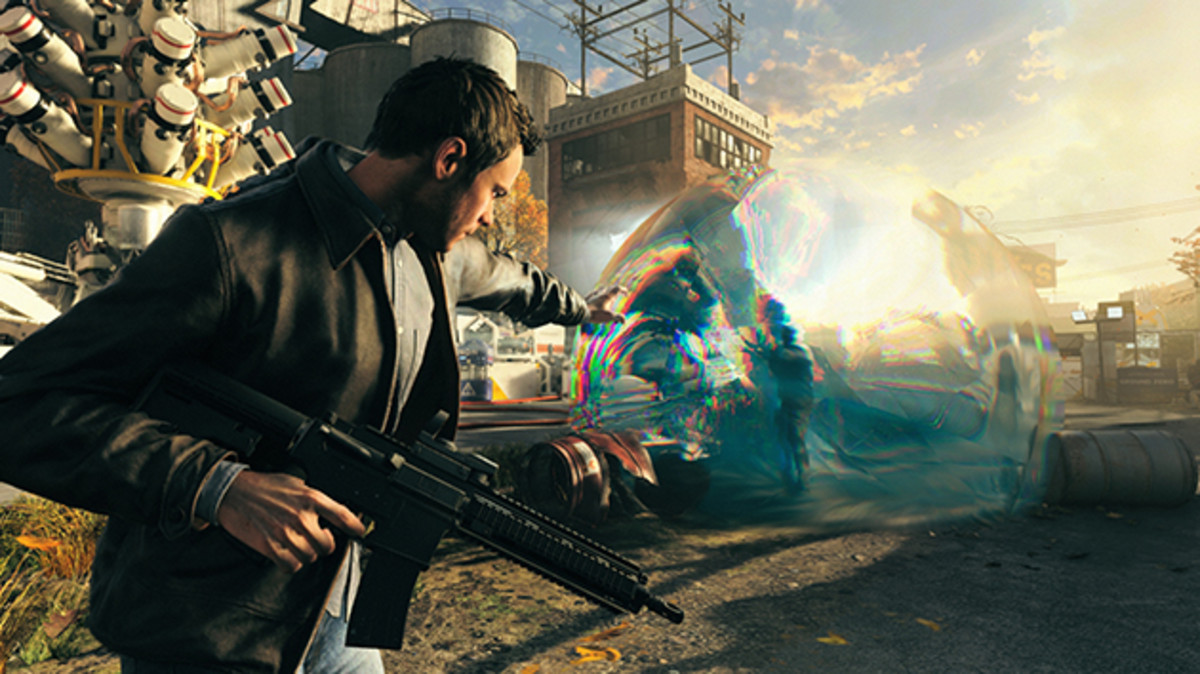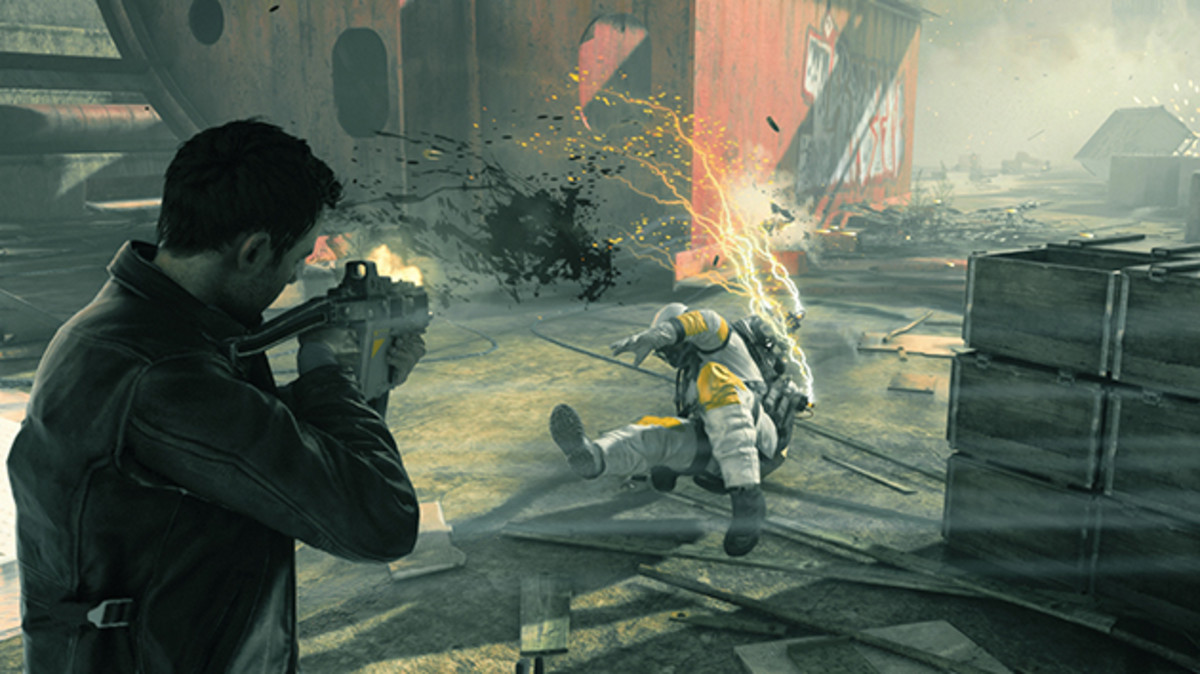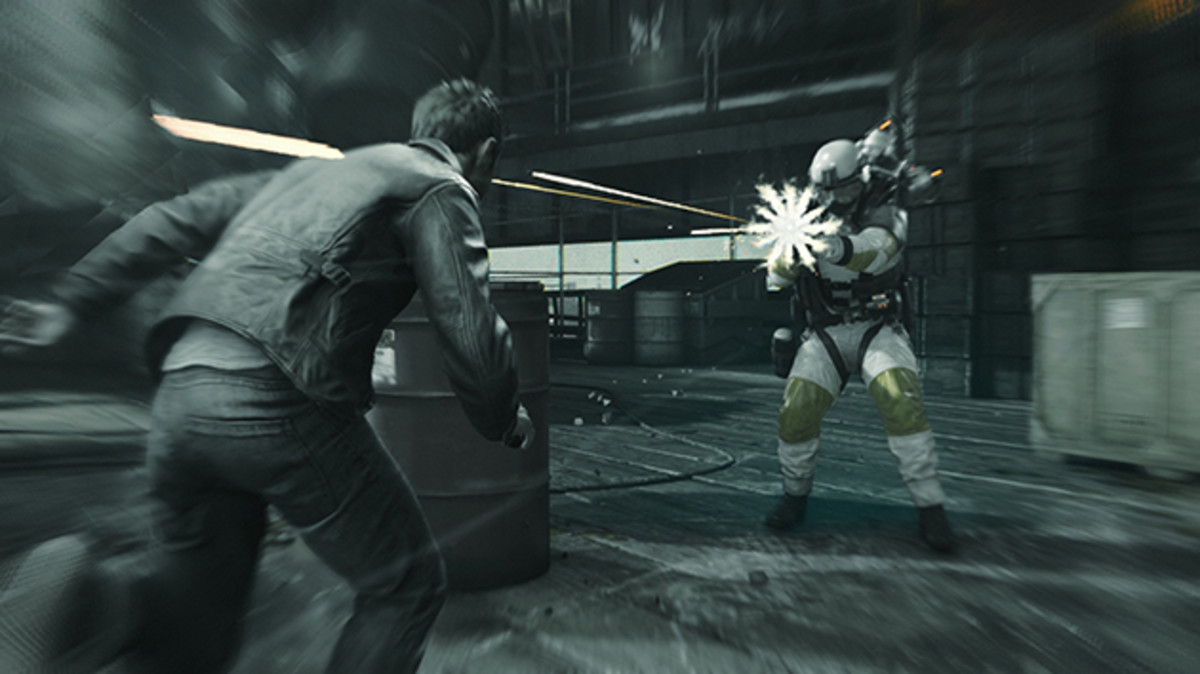Review: Quantum Break

Quantum Break is the latest release from Remedy Entertainment. Known for their stylish action-thrillers (Max Payne and Alan Wake), Remedy takes a unique approach to storytelling with Quantum Break, using 30-minute live-action TV-like episodes to help drive the story.
The game is buoyed by a Hollywood cast with some big name actors in the lead roles. The protagonist of the game, Jack Joyce, is played by Shawn Ashmore (you might recognize him as Iceman from the X-Men films). His brother, William, is played by Dominic Monaghan (Lord of the Rings and Lost). On the opposite side of the fence are two The Wire alums: Aiden Gillen (better known for his role as Little Finger on Game of Thrones rather than Tommy Carcetti in The Wire these days) plays Paul Serene, a longtime friend of Joyce and the game’s primary antagonist; Lance Reddick (Lt. Daniels from The Wire, among a number of other notable TV roles) plays Martin Hatch, his right-hand man.
The game is broken up into five acts, with each section of the game bookended by the live-action segments, which can be impacted by the choices you make at certain points throughout the game. These episodes break up the gameplay to further the story in a unique way, and even though the game is a lot of fun to play, you look forward to watching those episodes almost as if you’re on a Netflix binge. The production levels are solid, and each episode is up to par with a lot of big-budget TV shows. The acting, for the most part, is good. Actors like Gillen certainly lend their acting chops to the production, but some of the lesser-known actors turn in some inconsistent performances.
The game starts after Joyce and Serene are reunited after several years apart. As the only person he can trust, Serene calls on Joyce to help him out of a bind. He’s been building a time machine, but funding for the project is on the verge of being pulled. Serene convinces Joyce to help him run a live experiment and, as expected, things go awry. An accident occurs, which fractures time and sets in motion a somewhat convoluted set of events. This accident also imbues Joyce and Serene with the ability to manipulate time. Without getting into the story too much and potentially spoiling any plot points, you are literally in a race against time as you fight to prevent a catastrophic event.

Serene has the ability to see into the future, and the end of each chapter has you take control of him. Here, you are presented with two branching narratives. While you are given some insight into the consequences of your actions, you won’t know the full extent until you keep playing. Your choices can impact scenes in each of the live-action episodes that precede each chapter. These parts of the game also give you a different perspective on the story, and it helps to humanize Serene as you get to understand some of his motivations despite him being painted as the bad guy.
Visually, there are some incredible sequences and set pieces in Quantum Break. Parts of the game felt like I was watching The Matrix all over again for the first time. The “time stutters” that distort the world around you are mesmerizing to watch, and you can’t help but carefully observe the world around you, especially when everything around you is in a state of suspended animation.
The shooting mechanics are passable but far from great. If aiming is not your forte, you will want to have the aim assist on. While you can overlook the shooting, the auto-cover mechanic is much harder to ignore. You can’t manually get behind a piece of cover, as you automatically stick to it when you get near it during combat. This will inevitably lead to some frustrations during combat.

Luckily, your superpowers make up for all the shortcomings of the gunplay. Your powers turn an otherwise ordinary third-person shooter into an absurdly fun game. Joyce has the ability to create time bubbles that freeze anything caught inside, throw up a time shield that will freeze any incoming gunfire, sprint at blinding speeds, slow down time to easier line up shots and focus his power to create a devastating explosion.
While combat was insanely fun thanks to your awesome powers, the game gives you access to your full suite of abilities far too early. There is an upgrade system for each of your powers, but they’re only incremental upgrades that, for the most part, only offer minor advantages. There just isn’t much sense of character progression throughout the game. Even on the hardest difficulty, combat was rarely ever challenging. Once you had a good feel for how you could really use your abilities to create mayhem on the battlefield, dispatching enemies was a breeze. The game eventually introduces two special unit types to up the challenge: one is outfitted with a special suit that makes them immune to your freezing ability and they can quickly dash like you, and the other is an armored up bullet sponge with a huge machine gun. While they can slow you down, ultimately, they’re not all that difficult to take down.
There are some creative platforming sections in the game where you use your powers to get past obstacles, and there was a lot of potential to create more challenging non-combat sections throughout the game. Unfortunately, those moments are few and far between. This felt like a huge missed opportunity, as having more of those types of sections would have added another layer to the game.

Remedy has introduced an extremely unique, narrative-driven game with Quantum Break. The idea of creating a dynamic story with TV-like episodes between acts of the game is a successful formula that could very well be adapted by more games in the future. Combat is fun largely due to your time-manipulating powers, and the story is compelling enough to drive you through each section of the game as you eagerly await to reach the next episode of your binge.
